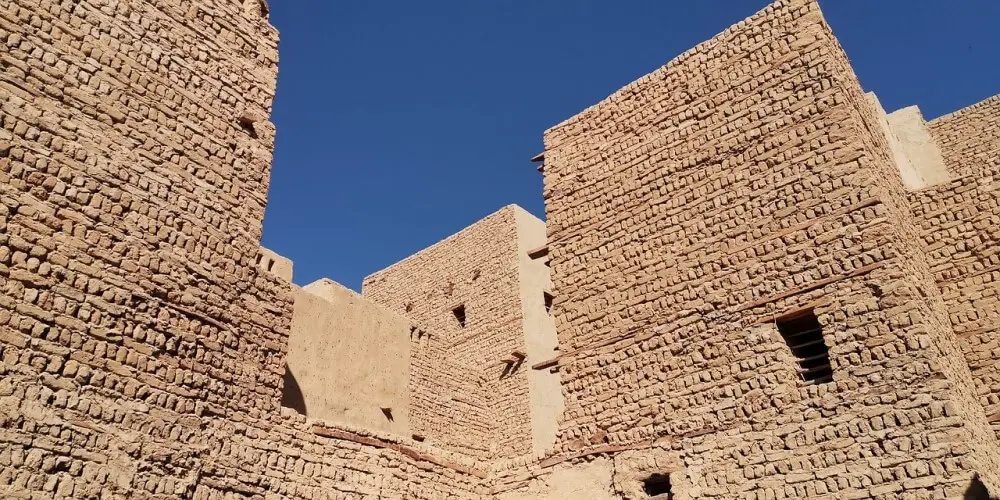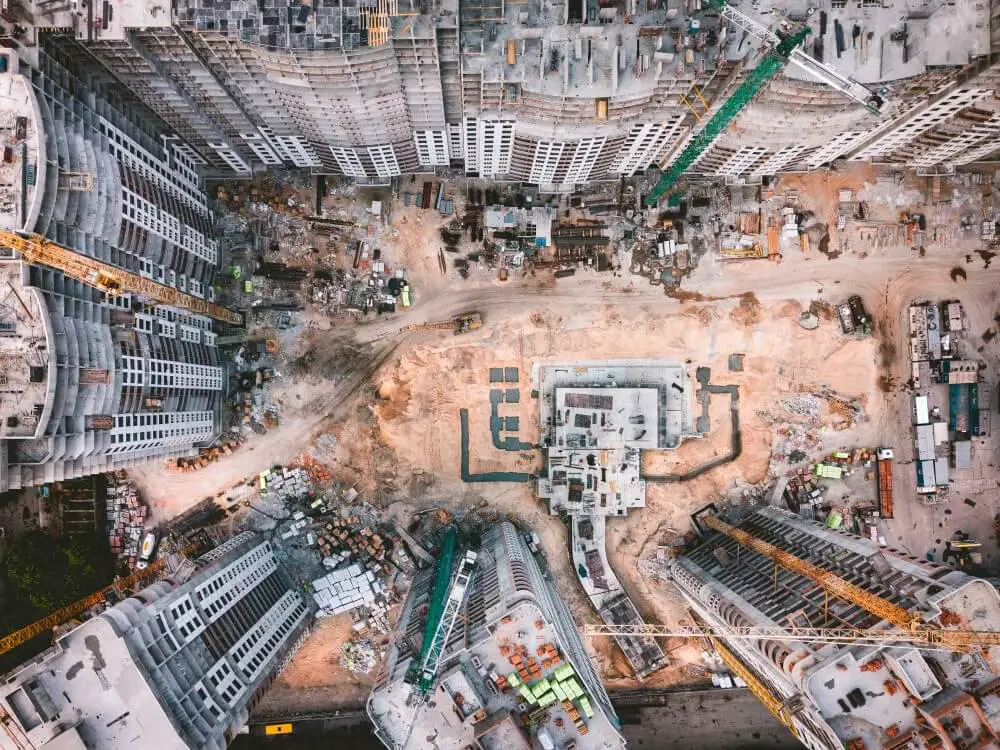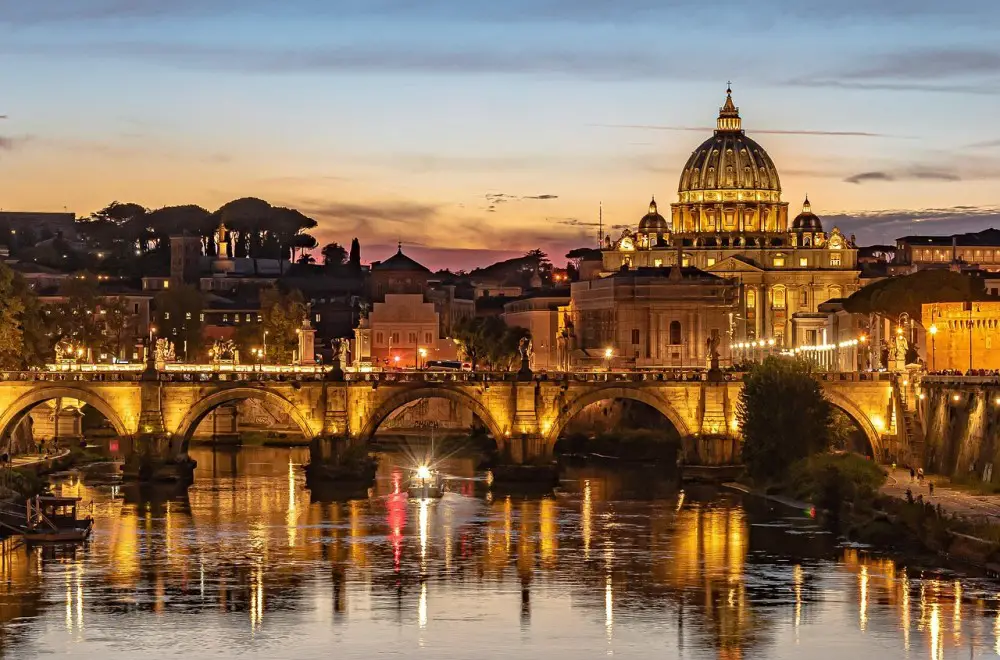In many cities around the world, space is at a premium. The pressures of a growing population and a greater technological footprint have meant that architects and urban planners have had to find solutions that maximise the amount of land available for use.
One such solution that has been regularly explored is building cities on top of existing ones. In the process, creating a layered city that has buildings from the ages piled on top of each other, as opposed to building on previously untouched ground.
Of course, this isn’t just a modern phenomenon. Cities like Rome, Istanbul and Athens have been reinventing themselves time and time again over the course of thousands of years, and have faced the challenging task of preserving historical and cultural sights while ensuring no space is wasted.
With this in mind, today we’re asking the question: how are cities built on top of each other?
There are a variety of ways cities can be built on top of each other. Sometimes, construction materials will sink into the ground and then be recycled for use in new buildings. Or, the existing foundations of a building may be strong enough that only the upper storeys need to be newly built.
Read on to find out further why modern cities are built on top of ancient cities, what the advantages are of building a layered city, and what some famous examples are of cities that have been built on top of their older counterparts.
But first, let’s ponder the question of how cities are built on top of other cities in greater depth.
How are modern cities built on top of ancient cities?
There’s no one single way that modern cities are built on top of ancient cities. It really depends on the city, time period and individual building in question. However, throughout history, there have been some common methods of building cities on top of each other.
For example, Neolithic and Bronze Age cities like Troy were made of mudbrick, so when they were demolished, the mudbricks were compacted and new constructions were built on top of it. When fired bricks became the go-to brick of choice, they were simply recycled for new buildings.
Except for cases of widespread devastation or destruction, the process of building on top of old cities is a continuous one, where one building is demolished and replaced with a new one. When there were stone buildings that people no longer wanted, they dismantled them and reused the stones.
In some locations throughout history, the outdoor ground level was known to have gradually risen as people threw their waste out in the street. Over a long period of time, this turned to dirt and raised the level to the point where bottom floors may have been discarded.
Meanwhile, on rare occasions, the foundations of ancient constructions have at times been used as the basis for new constructions. This may occur, for example, when building planners use the superstructure of the ancient building as an outline, and then construct the foundations based on it.

A crucial factor in building on top of old cities is the way the older city was constructed. Typically, if city walls protected not only temples and palaces but houses too, the city would be more likely to have been continuously inhabited.
On the other hand, if the city was largely unprotected, as was the case with Mesopotamian cities, people left the city and it became deserted.
In modern times, construction workers often cut through old cities for foundations, drains, utilities, and other purposes. Every worker and urban planner ought to be familiar with the stratigraphy of a city, which may include a brick layer, a cobbled layer, or a mud layer.
Why are some modern cities built on top of ancient cities?
Modern cities are often built on top of ancient cities due to the continuous inhabitation of a particular location. The newest inhabitants have no choice but to build on top of previous constructions, in many cases using the same materials.
This is particularly the case in harbour-based cities, which are often geographically limited in terms of space and require close proximity to the harbour for residents. As such, architects and building planners have to build on what is already there.
There are other reasons why modern cities may be built on top of ancient cities. For one, ancient cities were located where they were for a reason – likely in terms of defence, trade or geographical reasons. Therefore, it makes sense that urban planners would want to capitalise on this when building in a city, as better locations may be hard to come by.
Indeed, this in turn may mean the new buildings can leverage the existing infrastructure, which can include any irrigation, transport networks or building materials. This would naturally be a preferable option to starting afresh, which would involve huge expenditure.

Of course, on a wider scale, there is also the possibility that the city in question may have been destroyed or greatly damaged, to the point where a lot of the land is no longer inhabitable. This has been the case with many cities throughout the ages who have been subject to wars, plagues or natural disasters, to name just a few.
In these cases, it’s often the desire of those left behind to want to stay and rebuild their city, due to sentimental as well as practical reasons. After all, they may have had nowhere else to go, so building a new home on top of the destroyed structures was the obvious and only choice.
It has also been known, on occasion, for rulers to establish dominance over a conquered people by building a new city on top of the one that stood before. This has been seen in places like Istanbul, which was built over the Greek ruins of Byzantium, and Jerusalem.
What are the advantages of building cities on top of each other?
There are numerous advantages to building cities on top of the cities of before, as opposed to finding new locations for them entirely.
For one, it can offer an opportunity to maximise the amount of space and land available for residential, commercial or other use. This means that there is less need for developers to plot new land for construction, lowering the environmental impact.
Another advantage is the fact that building cities on top of each other can help preserve cultural and historic sites. Incorporating buildings like churches, temples and other ancient structures into modern cities means they retain their user base, and therefore continue to be maintained and repaired. They are also more likely to benefit from the tourism industry.
Likewise, as previously mentioned, it is far easier to link new construction in pre-existing cities with infrastructure like transport and irrigation. This has a positive impact in terms of accessibility, for both residents and visitors alike.

What are the challenges of building cities on top of each other?
There are numerous challenges to building cities on top of each other that architects and building planners must account for when attempting the task.
Undoubtedly the most fundamental of challenges is ensuring the structural stability of the new structures. Engineers must make sure that the old layers of the city will be able to support the weight load of a new set of structures, as well as ensure that the foundations have not been subject to potentially damaging wear and tear, if used.
And, beyond this, planners must account for all of the infrastructure needed to go along with the construction of new buildings, whether that be water, sewage or electricity. Should these elements not be compatible due to the presence of the existing layers, then the buildings can not perform their key function.
Meanwhile, another challenge that comes with building a layered city is the potential impact to preservation efforts. For new construction to begin over the top of old cities, all relevant parties must make sure they are not burying or damaging anything that could be of cultural or historical value.
Lastly, the buildings of yesteryear were often not built with many of the safety features we come to expect today. So, planners must ensure that, should their buildings match the same specifications of the old structures, both builders and future residents can live and work without the risk of harm.
Famous examples of cities built on top of each other
Around the world, there are some famous examples of well-known cities that have been built on top of the ruins of cities of the past. Some of them include:
Rome

The capital of Italy, Rome, is one city that is famous for being built in layers, one on top of the others. Dating back more than 2,500 years, there are many layers of the city that once stood, and have since either sunk into the ground or been recycled.
Just some of the many layers of Rome include the original Ancient Rome, founded in 753 BC, Medieval Rome, Renaissance Rome, and later Baroque Rome in the 17th and 18th centuries.
Istanbul

Istanbul is a city that has seen a lot of change over the centuries. At different times, it has been the capital of the Roman, Byzantine and the Ottoman Empire. Today, all of these layers lie beneath the soil of modern day Istanbul.
Athens

Like Rome and Istanbul, Athens is a city that holds a prominent place in history, and has been rebuilt numerous times from the Ancient period to the modern. Alongside this are monuments like the Acropolis and the Parthenon, which have stood the test of time to remain standing today.
Jerusalem

One of the world’s most visited cities, Jerusalem in Israel is another city that is renowned for having multiple archaeological layers. The city has been destroyed and rebuilt at least twice and is home to multiple layers of structures that span its momentous history.
Naples

Originally the site of Ancient Greek and Roman settlements, Naples is now Italy’s third-largest city. Despite being damaged greatly on numerous occasions, most recently in World War 2, its position as a secure harbour has meant the city has continued to be rebuilt in place for centuries.
Can new buildings be constructed on top of ancient ruins?
Yes, new buildings can be constructed on top of ancient ruins, using special engineering precautions and techniques. However, this usually only happens when the site is in need of further measures of preservation, or is becoming unsafe due to disrepair.
However, the procedure of building on top of ancient ruins has to be done carefully, as archaeological remains may be damaged should construction take place incorrectly. Usually, this means that thorough research and approval documentation is needed in order for a project like this to proceed.
That’s it for our guide to how cities are built on top of each other. As we’ve seen, some of the most famous cities we now admire have only been made possible by the efforts of past architects and engineers, who have rebuilt their respective cities upon the structures of old.
And who knows – perhaps in a thousand years time, there may be cities that have been built on top of the ones we take for granted today.
For more related news, views and in-depth guides, take a look at our range of cities articles. For example, take a look at some of the top construction projects from Birmingham, Leeds and Glasgow.
Or, if you’d like more definitions on building and architecture vocabulary, take a look at our selection of building wikis, including what is meant by a kop in stadiums.
Last Updated on 21 March 2023 by Michael
